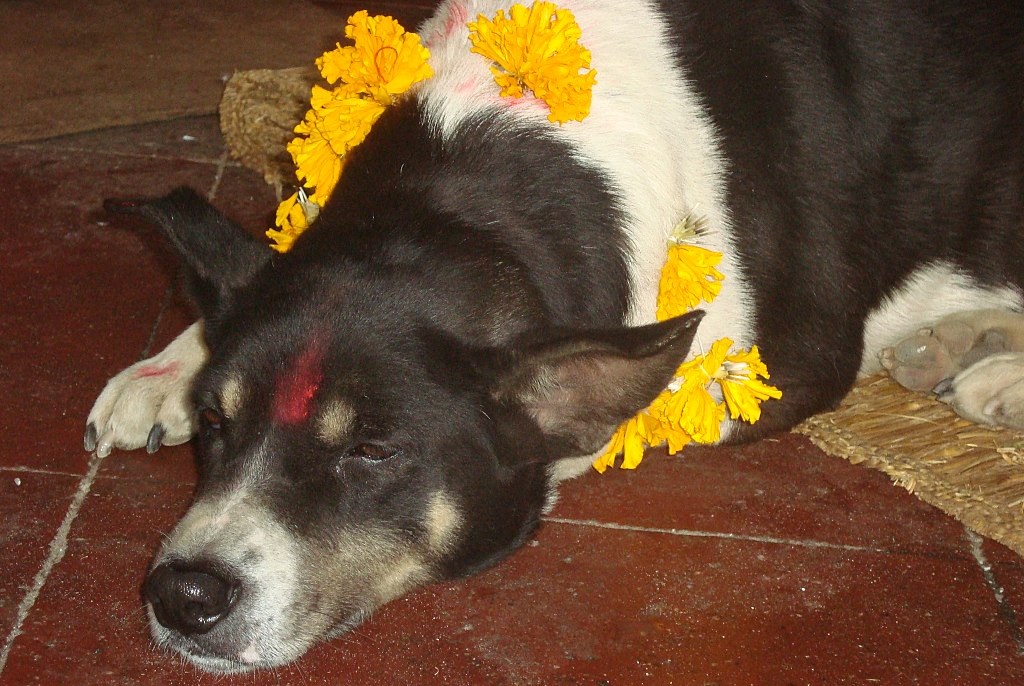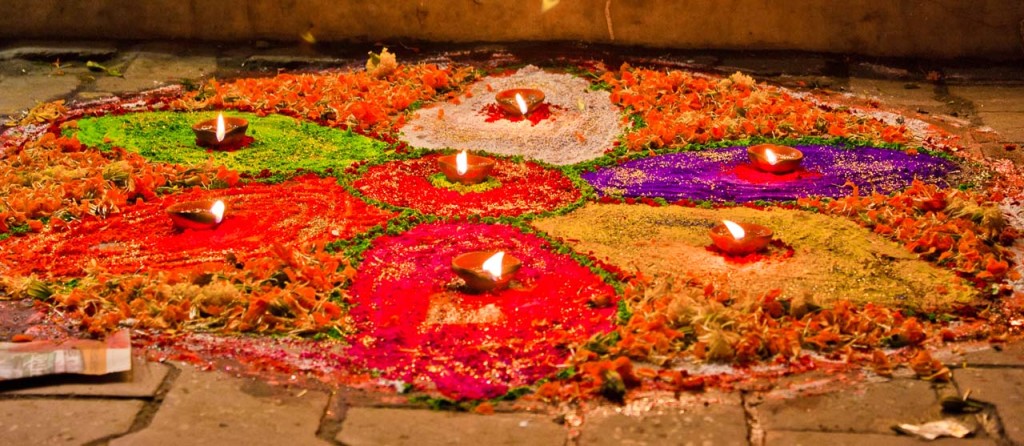- HOME
- Destination
- Adventure Activities
- About Us
- BLOGS
- CONTACT US

Nepal is a multi-cultural country, where about hundreds of festivals are celebrated yearly. Some festivals even go for days. The festivals are celebrated according to the ethnicity and religion. Festivals like Dashain, Tihar, Christmas are religious, and various ethnic groups celebrate Udhauli, Ubhauli, Losar. You may find it hard to believe, but in Nepal, the place you live too defines the festival you celebrate. Chaath is celebrated in Terai region; Gaura Parwa is celebrated in Hilly region of Far Western Development Region, well, these are only the examples, there are so many festivals in Nepal that are so distinctive than other in the world.
Nepal is full of the festival of festivals and celebrations. The main festival of the year, Dashain is the longest and auspicious festival of Nepal that goes for 15 days, which signifies the victory of good over evil. Holi is the festival of colors that signifies the victory of good over evil too. Also, it signifies the arrival of spring, end of winter, a festival to meet others, forget and forgive, play and laugh and repair the broken relationships. Likewise, several festivals teach just the way of life through various means of celebration.
In the long list of such festivals of Nepal, Tihar is one of the joyous and loved festivals of Nepal. And, the dog festival, which we are talking about today is one of the festivals of Tihar. So, let us have a brief introduction to Tihar.

Tihar Festival of lights
Tihar is also known as Deepawali/Yamapanchak/Swanti. It is a five-day-long festival. Tihar is the festival of lights, as diyas (oil lamp) are lit inside and outside the houses to illuminate at night. Nowadays, several types of electrical lights are used too. In Nepal, Tihar is the second biggest festival of the year after Dashain. It is a very important festival as the festival shows contribution not to just gods and humans but to the animals too for keeping the intimate relationship with humans. The festival worships the animals like crow, cow, ox, and dog.
This five-day festival begins with Kaag Tihar (Crow festival), followed by Kukur Tihar (Dog festival), then Gai Tihar (Cow Tihar) and Laxmi Puja, the fourth day is Govardhan Puja (Ox Festival) and finally, the fifth day is Bhai Tika (Worship of Brothers). All the five festival have their significance and is worshiped throughout the country.
Kukur Tihar/Dog festival celebrated in the second day of Tihar. This festival is also called the Khicha Puja by the Newar community of Nepal. This day is dedicated to the dogs for their utmost love, friendship and loyalty to the humans.
We offer them with Tika (mark is usually worn in the forehead), a wreath of flowers and delicious foods as a thankfulness for the cherished relationship between dogs and humans. People worship their dog if they have one as a pet, if not then they worship the dogs on the street and offer them foods and flowers. Every dog gets extra respect and loves this day.
Even in the Hindu mythology, dogs occupy a special place. In Mahabharata, Bhairava, a fierce manifestation of Lord Shiva, had a dog as his vehicle. Also, Yama, the god of death, is believed to own two dogs as a guard – each with four eyes. Those dogs are believed to watch over the gate of Naraka (hell). Due to this belief in Hindus, this day is also observed as Naraka Chaturdashi.

dog festival in Nepal
Usually, this festival falls in the month of Kartik as per the Nepalese Calander. Generally, the month of Kartik starts from 18 October to 16 November. So, if you want to witness this humble festival along with others, then you know which month to visit Nepal.
You are more curious about the Dog Festival of Nepal, and now that your curiosity has been answered, it won’t hurt to know about the other festivals of Tihar, yes?
Kaag Tihar (Crow festival) is the first day of festival of Tihar. In this day, crows and ravens are offered with sweets and dishes placed on the roof of the houses. This day is celebrated because they are believed to be the messenger of sad or grieving news. As per the Hinduism, the cawing of crows and ravens symbolizes sadness and grief, so devotees offer crows and ravens food to avoid any grief and death in their homes.
This is the third day of the Tihar festival. In the morning of this day, cows are worship by putting tikas, a wreath of flowers and offering foods. According to the Hinduism, cow signifies wealth and prosperity. People benefitted a lot from a cow during the ancient times. Milk, dung and even urines are used for purification. In this days, houses are cleaned, and the doorways and windows are decorated with a garland made of marigolds and makhamali flowers.
Then in the evening, Laxmi, the goddess of wealth is worshipped and thanked for all the blessing that was bestowed on the families by lighting the diyas and candles on doorways and windows to welcome prosperity and well-being. During the night of this day, only girls get to visit the houses in the neighborhood where they sing and dance, which is known as Bhailo. They collect money from the houses as a tip and share it later. It is just like Halloween, you guys collect candy, and we collect money.
After the third day of the festival, Tihar is celebrated with deusi and bhailo with lights and various kinds of fireworks. Boys sing Deusi while girls sing Bhailo. The song of deusi is balladic, and it tells the story of the festival, where one person narrates and the rest does the chorus. Then in return, the owner of houses gives money, fruit, and selroti (a Nepali roundel made of rice, flour, and sugar). Nowadays, even social workers, politician and young politician visits homes, sings, and dances and collects fund for social and welfare activities.
This is the fourth day of Tihar, where three different pujas are done depending on the cultural background of the people. However, the ox is mainly worshipped in this day. This day is also called as Goru Puja or Goru Tihar.
Also, people who follow Vaishnavism performs Govardhan Puja, which is worshiped towards Govardhan Mountain. Cow dung is taken as representative of the mountain.
Additionally, the Newar community of Nepal performs Mha Puja (worship of self) on the night.
This is the fifth and the last day of the Tihar festival. This festival is also known as Kija Puja. It is celebrated by applying tika to the foreheads of the brothers by sisters to ensure their long life and thank them for the protection they provide.
As per the legend, Yamraj, the God of Death, visited his sister, Goddess Yamuna on this day, Yamuna applied tika on Yamraj’s forehead, garlanded him and offered him with many delicious foods. Yamraj and Yamuna, spend their time together very happily and enjoyed the time they spend. Upon their parting, Yamraj gave his sister a very special gift as a token of his affection, and in return, Yamuna gave him a gift too. That day, Yamraj announced that anyone who received a tika from their sister would never die on that day.
Sisters make a very special wreath made out of selected flowers which wilts only after a couple of months; this act symbolizes the prayers of a sister for her brother’s long life. Brothers sit on the floor while sisters perform this puja. The puja follows a ritual in which sister’s circles their brothers by dripping oil on the floor from a copper pitcher and they apply oil on their brother’s hair. Then, sisters put on seven-color tikas in brother’s forehead. After this ritual, brothers put tikas to their sisters too in the same manner and make an exchange of gifts. This festival makes the bond between brother and sister even closer. This ritual doesn’t discriminate the age, and those who don’t have any sisters join their relatives or friends for tikas.
Also, the Newar community makes colorful Ashtamangala mandalas and recites chants and procedures according to the Tantric rituals. Sisters also offer Sagun, sweets, Makgamali (Gomphrena globosa) garland and a sacred cotton thread which is of Tantric importance along with the seven-colored tika.
Your email address will not be published.Required fields are marked *
You must be logged in to post a comment.
0 Comments on "Dog Festival of Nepal: Celebrate the Friendship and Loyalty of the humble animal"